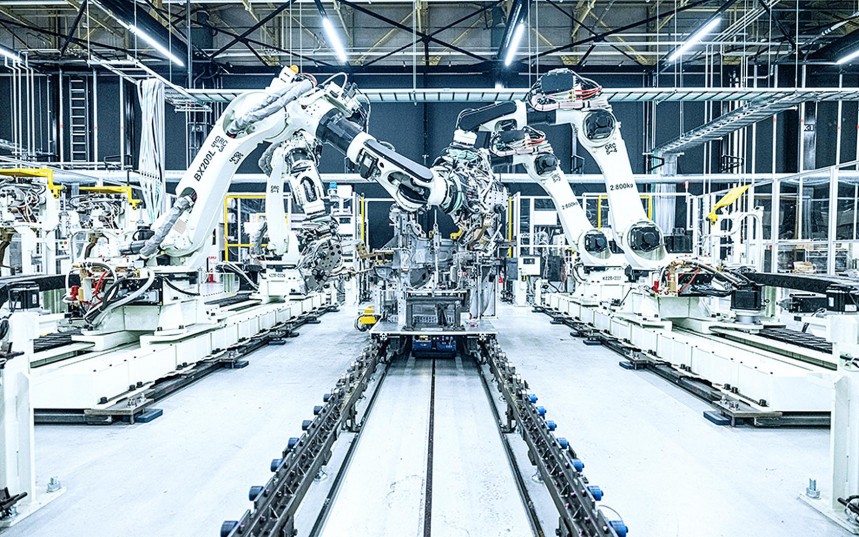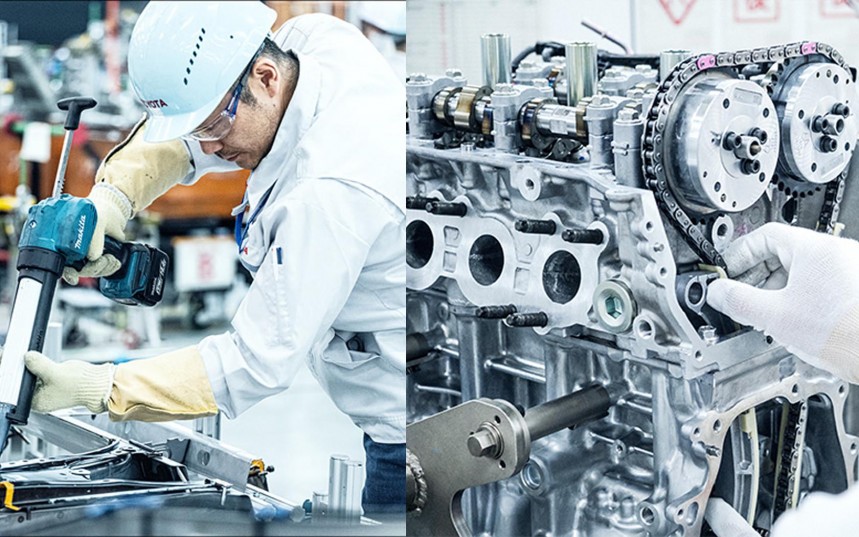Toyota’s highly anticipated hot hatch was launched earlier this year, bringing WRC technologies to the open roads. The highly capable performance car features a six-speed intelligent manual transmission, permanent four-wheel-drive, and the most powerful three-cylinder engine in production.
The performance version of the fourth generation Yaris was first unveiled at the 2020 Tokyo Auto Salon, and unlike the previous Yaris/ Vitz GRMN model, it is extremely capable and breathtakingly well designed.
Gazoo Racing engineers developed it to be suited for ordinary daily drives while also retaining the performance and precision level of the rally car.
Instead of using a regular production line for the new hot hatch, Toyota built a new high-tech one from scratch, dedicated to the GR Yaris, in its Motomachi plant located in Toyota City.
The plant was inaugurated in 1959, and in July that same year, the first vehicle, a Toyota Crown, rolled off the production line. In December of the same year 10,453 units were produced at Motomachi, breaking the monthly production threshold of 10,000.
Last year, the same plant rolled out an average of 73,000 units. The Toyota models made there are the Crown, Mark X, Estima, and the hydrogen-powered Mirai. Two Lexus models have also been built at Motomachi, the now defunct LFA, and the LC.
To retain the high rigidity and driving precision of the WRC car, the engineers use a special structural adhesive for the entire body and a similar urethane-based adhesive to secure the windshield and rear window.
Moreover, the chassis is assembled employing a different welding method than the standard Yaris. There are over 200 more weld spots on the GR model, and the distance between them has been shortened.
This process is more difficult and takes more hours to complete than a standard chassis, but it exponentially increases the rigidity of the bonds.
Also exclusive for the GR version is the new carbon construction method used for the roof panel, while the hood and the two doors are made from aluminum. This also increases rigidity and provides a significant reduction in weight.
The front and rear bumpers unique to the GR Yaris are also manufactured with weight saving in mind as well, using a new technology that makes them thinner without sacrificing the strength of the material.
At the heart of the hot hatch stands one of the lightest and smallest engines of its segment and also the most powerful inline-three ever produced in series. It is capable of a peak power output of 268 hp (200 kW; 272 PS).
To achieve this, the engineers use a hollow camshaft assembly that is far more powerful and lighter than the conventional camshafts used in the standard hatchback.
The powerplant is assembled using the same high-precision process as a racing engine. Pistons and connecting rods are precisely weighed and measured while testing and tuning is done using the latest methods and technologies in motorsport.
During assembly, all the parts that make up the chassis and steering and stability systems are verified using three-dimensional measuring and are only used if they are as close as possible to the ideal target measurements.
To confirm the perfection they aim for, Toyota engineers take one last set of measurements and carry out a wide range of tests and simulations.
The final test is performed by a professional driver on a purpose-built track, where the car is driven above its limits to verify that everything works flawlessly.
From the design room to the assembly line, the new GR Yaris is perfected in every way to offer customers the uncompromising feeling of driving a high-performance car that behaves exceptionally on the road, in normal driving situations, or on the track, when some speed therapy is needed.
Gazoo Racing engineers developed it to be suited for ordinary daily drives while also retaining the performance and precision level of the rally car.
Instead of using a regular production line for the new hot hatch, Toyota built a new high-tech one from scratch, dedicated to the GR Yaris, in its Motomachi plant located in Toyota City.
Last year, the same plant rolled out an average of 73,000 units. The Toyota models made there are the Crown, Mark X, Estima, and the hydrogen-powered Mirai. Two Lexus models have also been built at Motomachi, the now defunct LFA, and the LC.
To retain the high rigidity and driving precision of the WRC car, the engineers use a special structural adhesive for the entire body and a similar urethane-based adhesive to secure the windshield and rear window.
Moreover, the chassis is assembled employing a different welding method than the standard Yaris. There are over 200 more weld spots on the GR model, and the distance between them has been shortened.
This process is more difficult and takes more hours to complete than a standard chassis, but it exponentially increases the rigidity of the bonds.
The front and rear bumpers unique to the GR Yaris are also manufactured with weight saving in mind as well, using a new technology that makes them thinner without sacrificing the strength of the material.
At the heart of the hot hatch stands one of the lightest and smallest engines of its segment and also the most powerful inline-three ever produced in series. It is capable of a peak power output of 268 hp (200 kW; 272 PS).
To achieve this, the engineers use a hollow camshaft assembly that is far more powerful and lighter than the conventional camshafts used in the standard hatchback.
The powerplant is assembled using the same high-precision process as a racing engine. Pistons and connecting rods are precisely weighed and measured while testing and tuning is done using the latest methods and technologies in motorsport.
During assembly, all the parts that make up the chassis and steering and stability systems are verified using three-dimensional measuring and are only used if they are as close as possible to the ideal target measurements.
The final test is performed by a professional driver on a purpose-built track, where the car is driven above its limits to verify that everything works flawlessly.
From the design room to the assembly line, the new GR Yaris is perfected in every way to offer customers the uncompromising feeling of driving a high-performance car that behaves exceptionally on the road, in normal driving situations, or on the track, when some speed therapy is needed.











